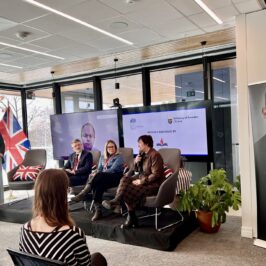By Justin Ma
In Irwin Cotler’s, “Twenty years after the Rwandan genocide, six lessons to remember, he wrote that the first lesson is how, similarly to the Holocaust, the Rwandan genocide started with government-sanctioned demonization and dehumanization of a minority.
Although this unit is about the Rwandan genocide, it can also be related to the Holocaust. The first lesson explains how the government referred to the Tutsi as “inyenzi” (cockroaches) as a way to justify their mass murder. Similar to the Rwandan government’s method of dehumanization, the Nazis categorized the Jews as a race that was sub-human and referred to them as vermin.
To propagate his racist ideology, Hitler used posters that were plastered in public spaces. The Nazis demonized Jews by using propaganda to blame Germany’s loss in WWI on the Jews and censored all forms of media that would suggest otherwise. Books were burned, anti-Nazi newspapers were closed, and people were forbidden to listen to foreign radio stations.
To instill the Nazi’s racist mindset in the next generation, pseudoscience, such as Aryan race theory, was taught in schools. Teachers would even take various measurements of students’ heads to see if they were a part of the true “Aryan race”. The result of this relentless demonization and dehumanization was indifference and acceptance of the Nuremberg laws and the ability to participate in Pogrom Night (Kristallnacht) with a clear conscience.
Nazi propaganda could even turn ordinary people into those who would actively collaborate with the Nazis. An example of this phenomenon was the family company, Topf and Sons. This company started out as a traditional brewing and malting manufacturer that had branched out to make ovens for civil crematoriums. However, by the end of WWII, they had designed ovens that were focused on efficiently disposing of the corpses of those who were gassed in the death camps.
The first lesson explains how genocide begins not with murder, but with words. It explains how the Hutu Militia’s racist ideals lead them to murder approximately one million people. Although this genocide might seem like something from the past, its seed, racism, remains embedded in our society. Although not as extreme or as common, it is still present and an issue.
This first lesson can serve as a wake-up call for those who believe racism is benign and it can serve as a reminder for everyone to be mindful of what they say, to stand-up for victims of racism, and to condemn those who are racist.
Justin Ma is a Grade 10 student of Alyssa Novick’s class in Ashbury College’s International Baccalaureate program. His sample student assignment based on her lesson is available on the CHES Lesson Plan Page.






